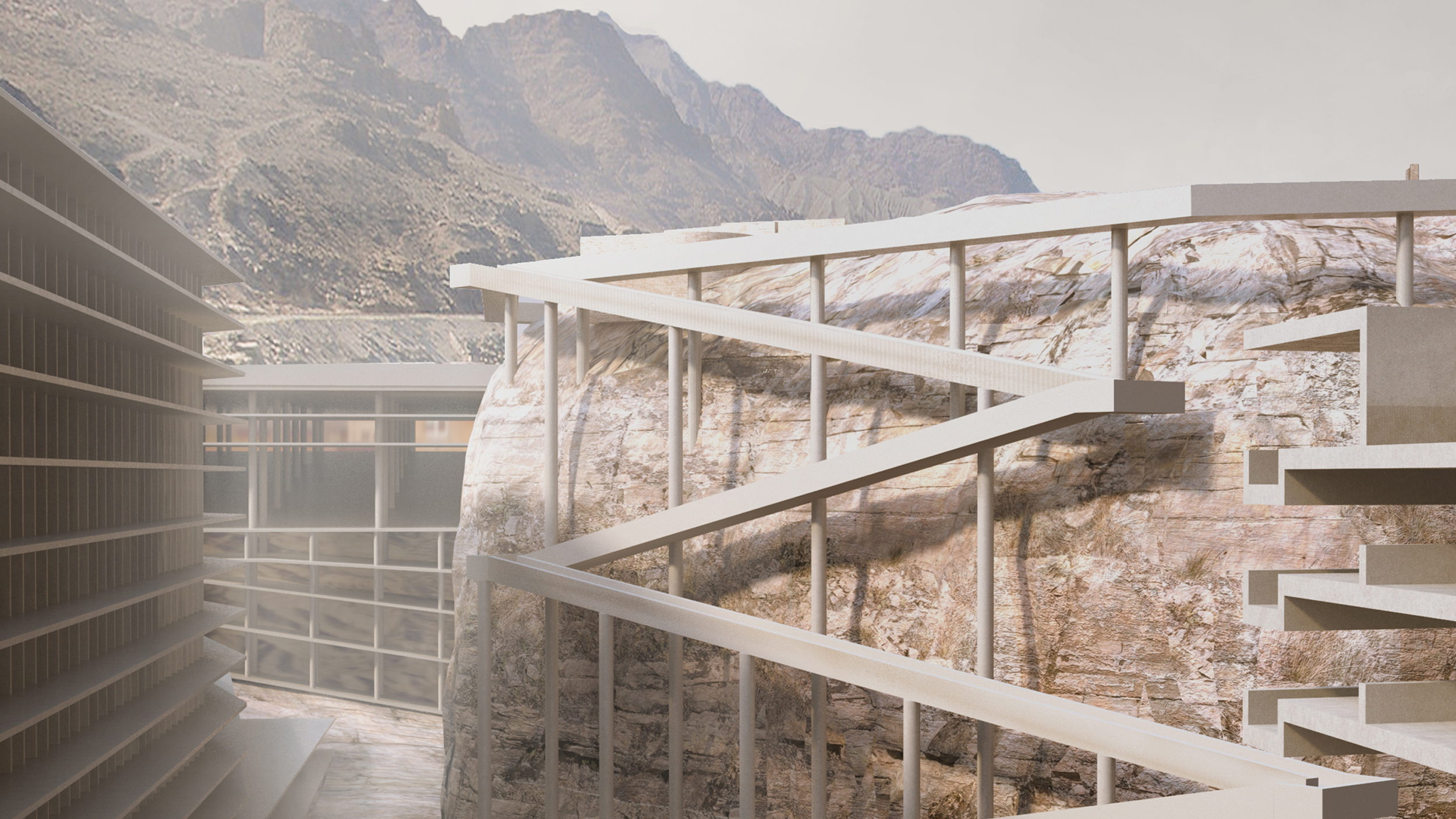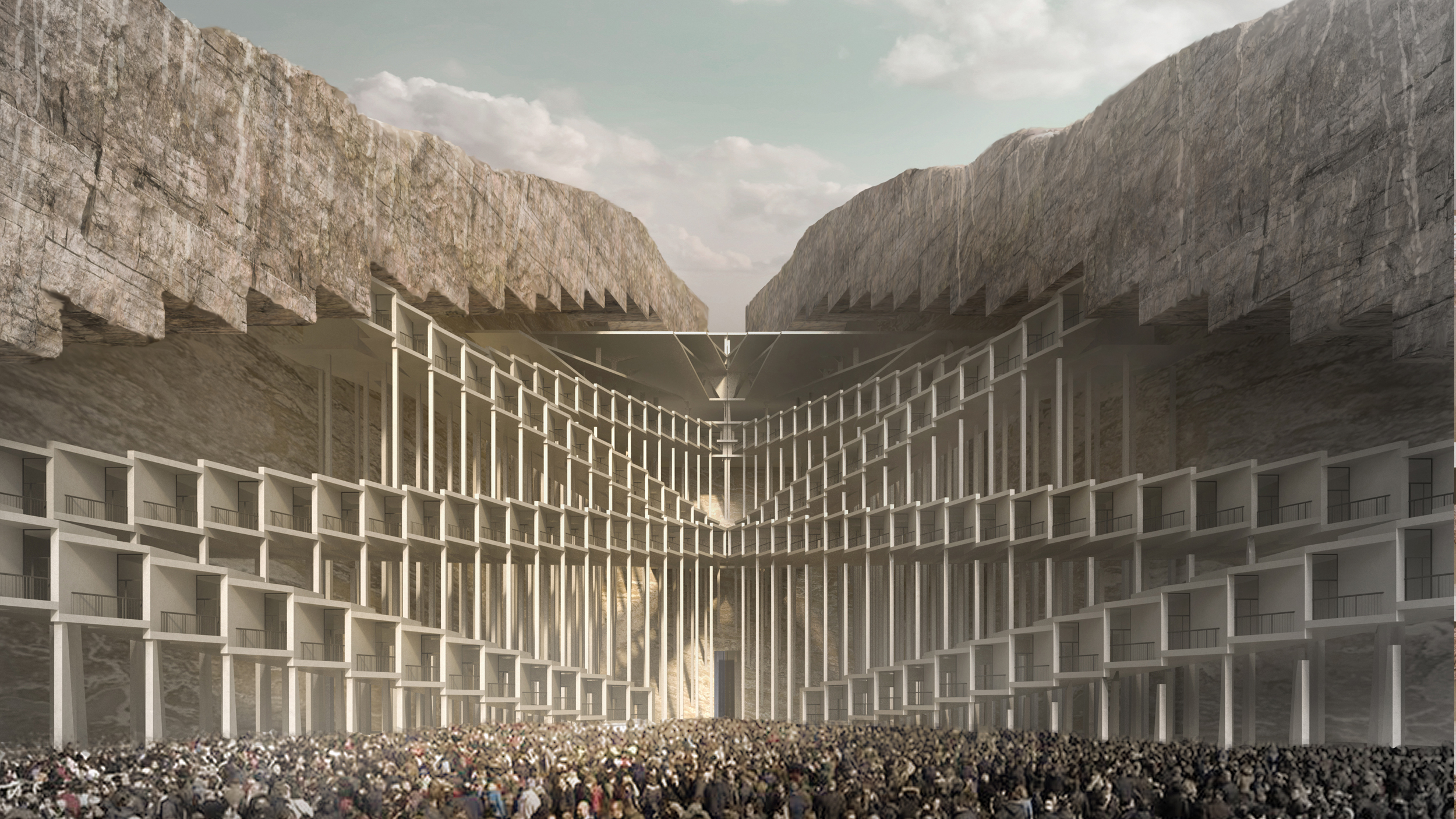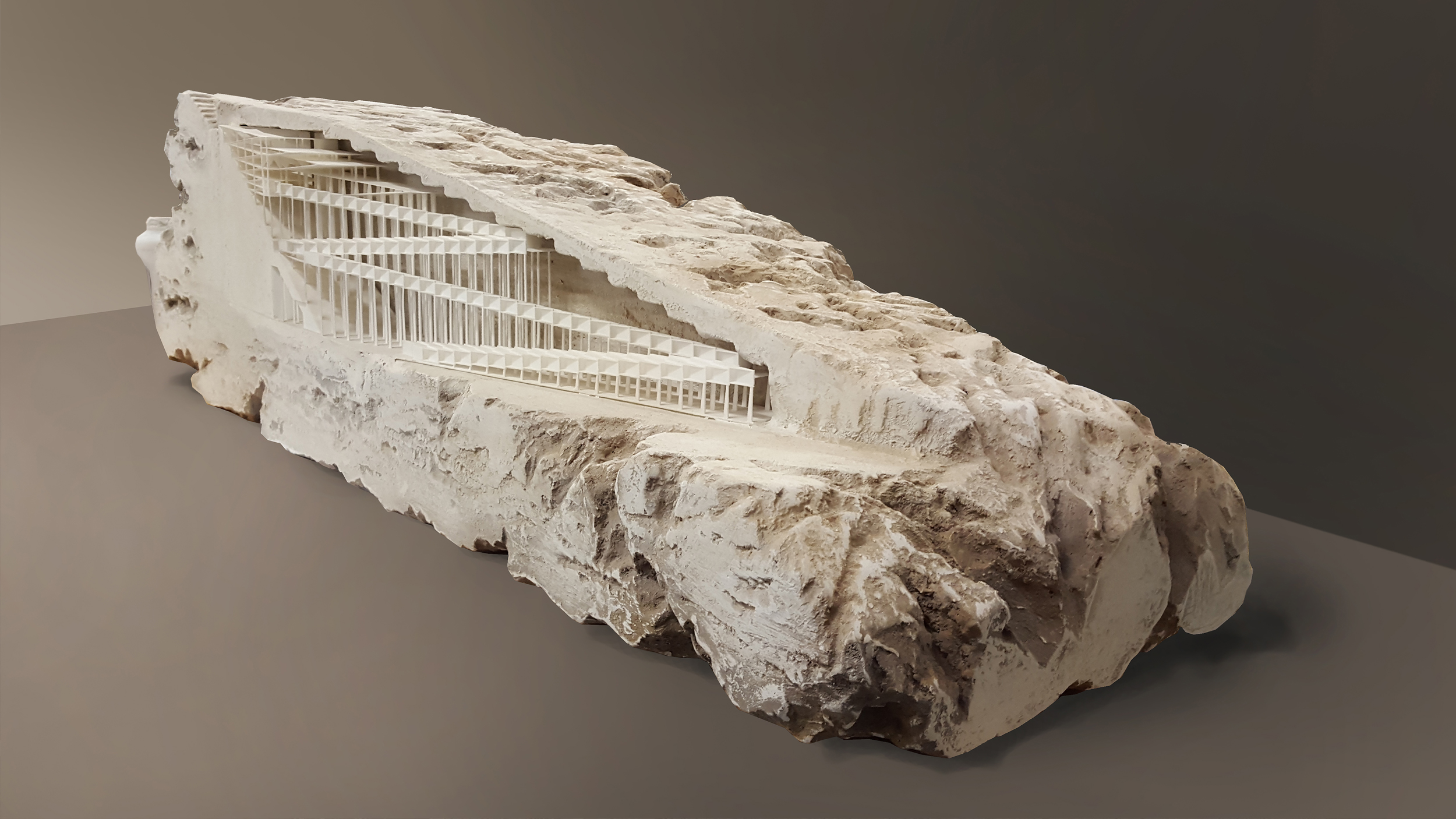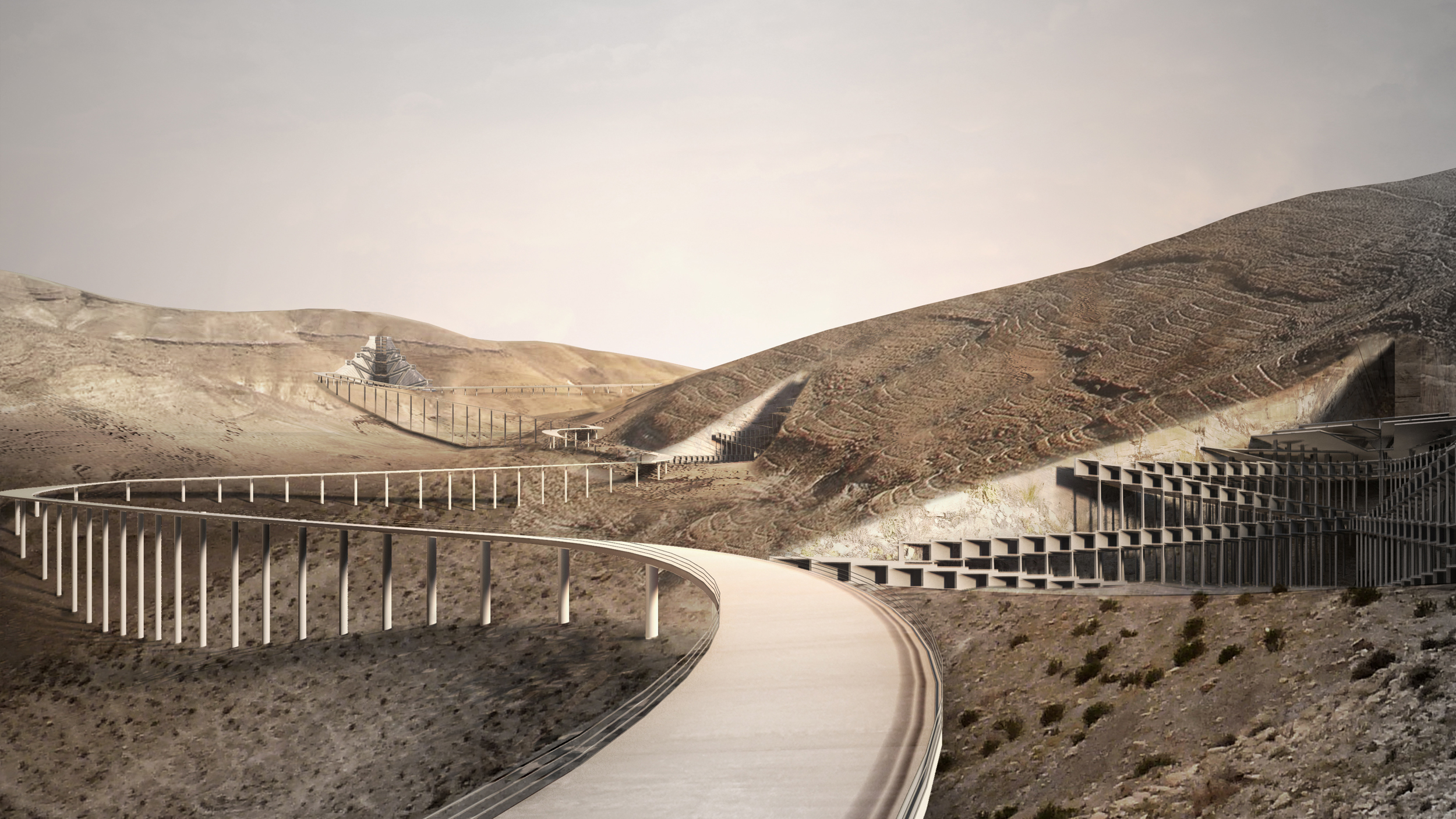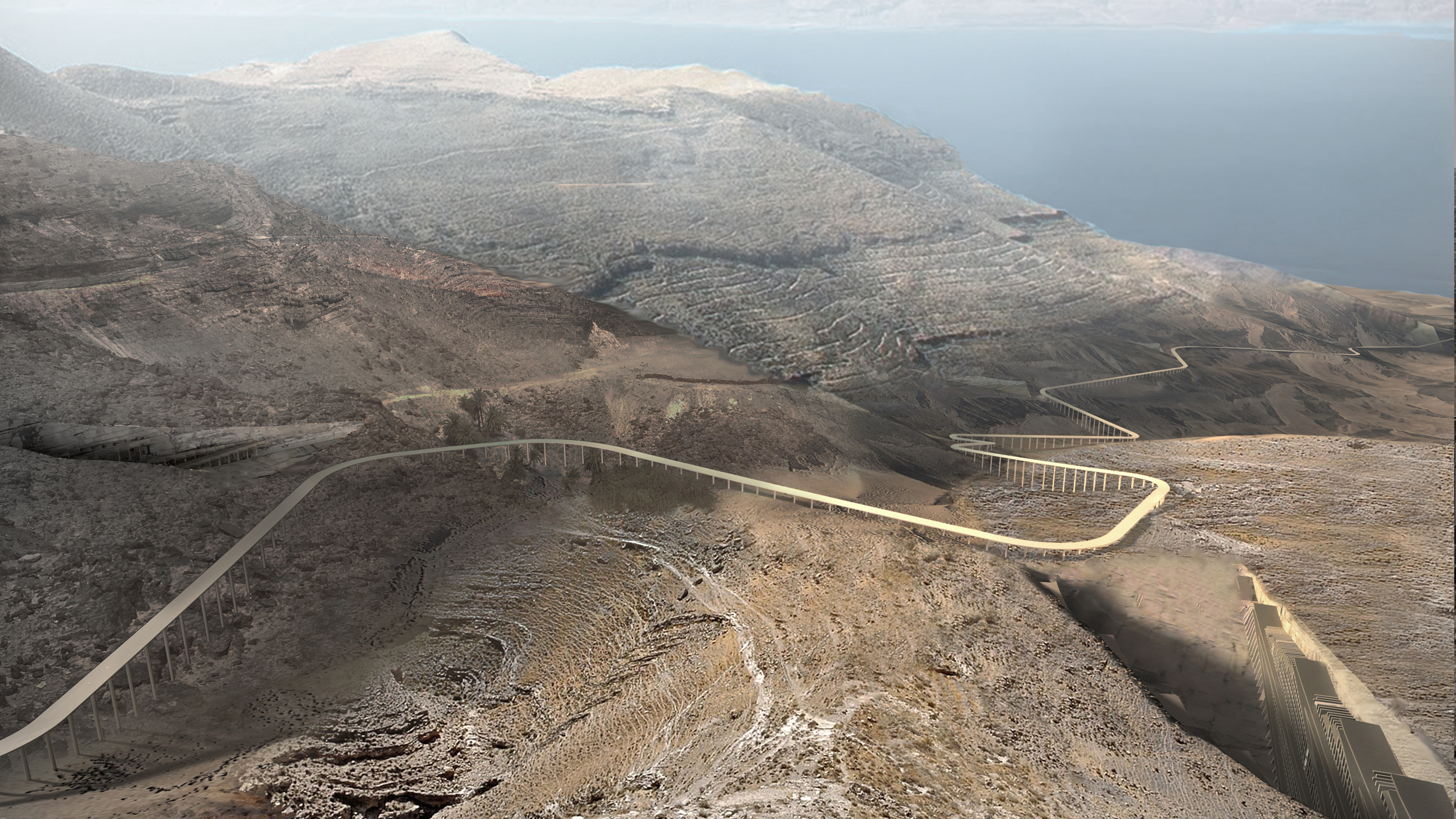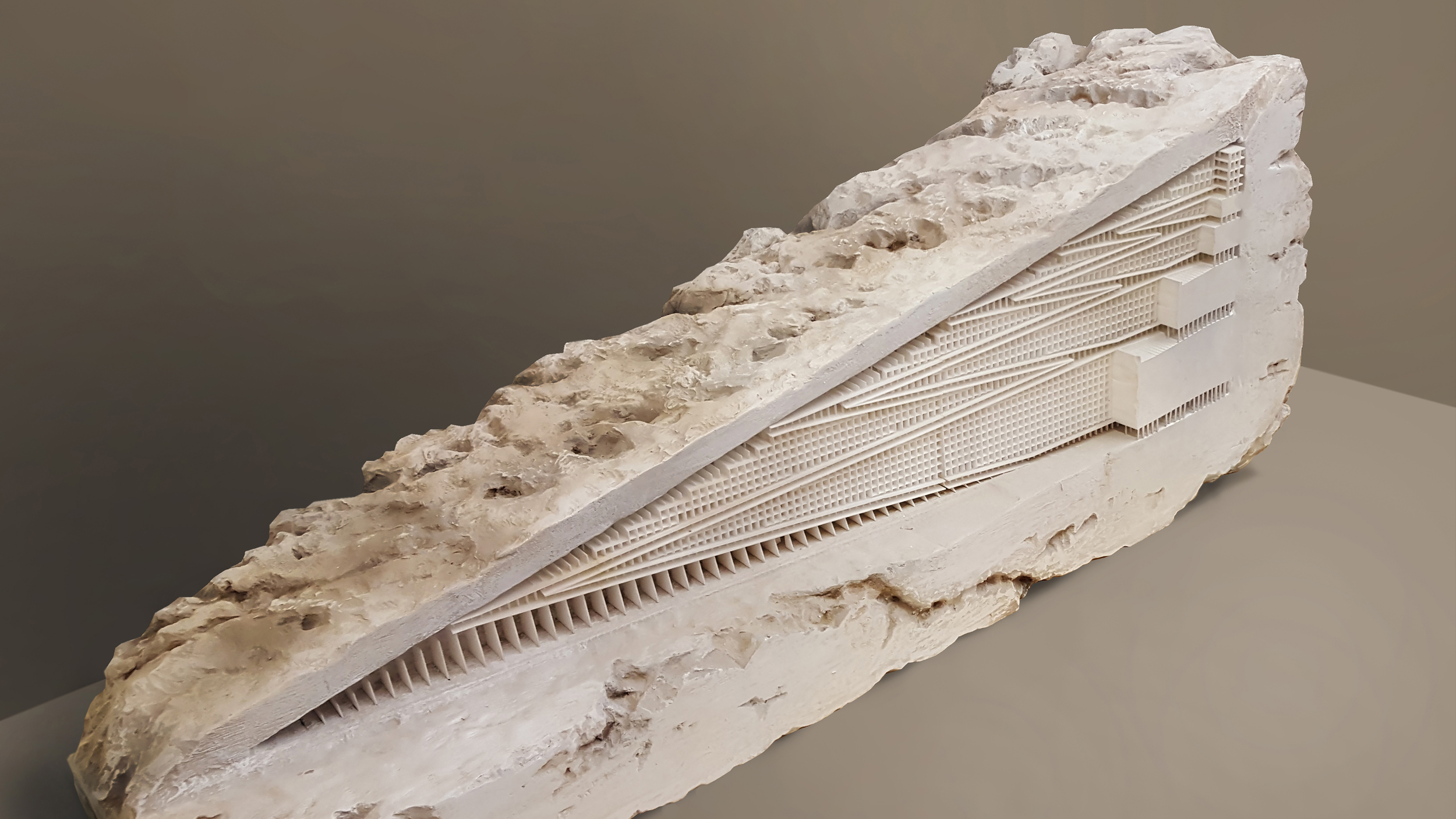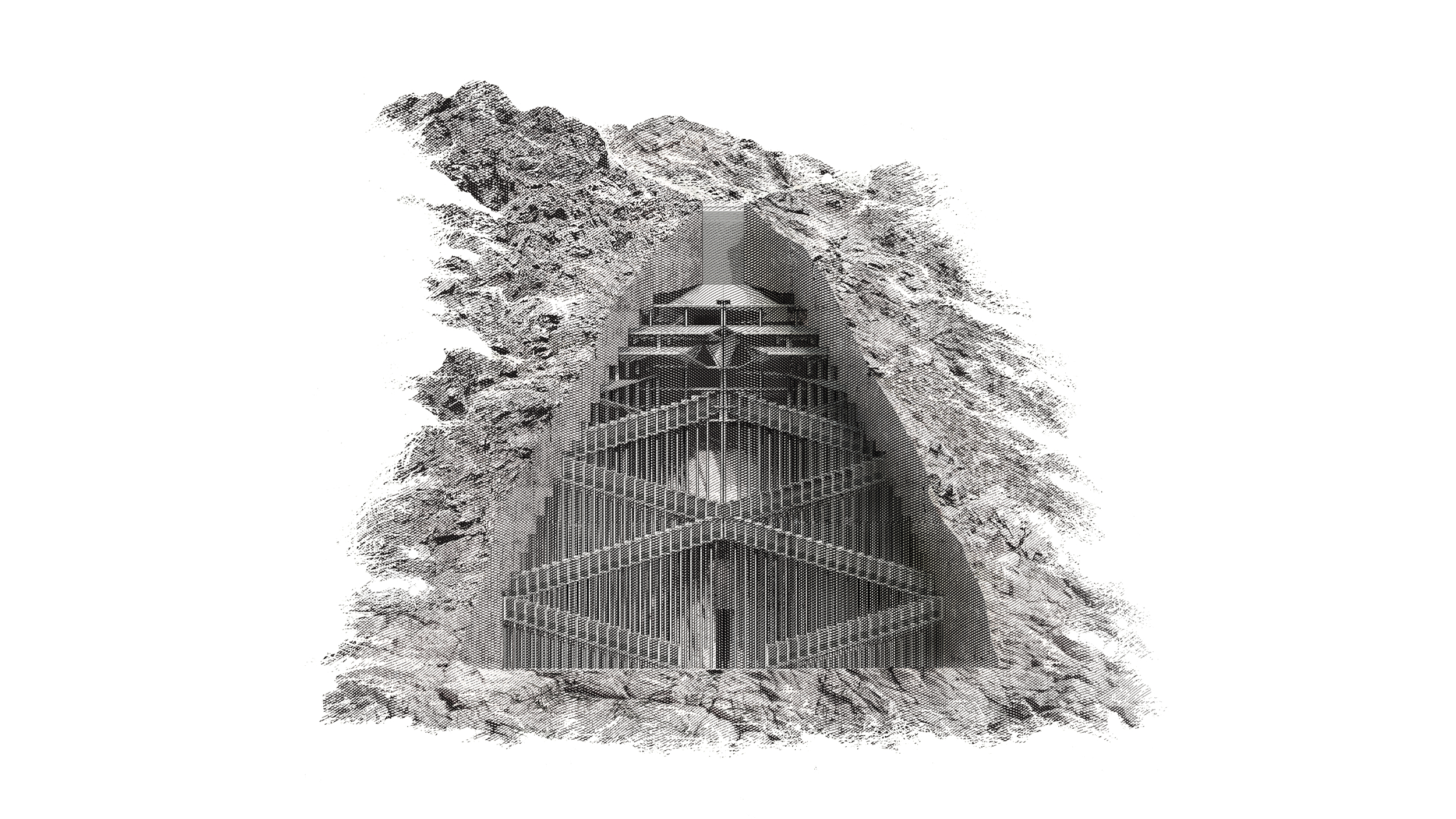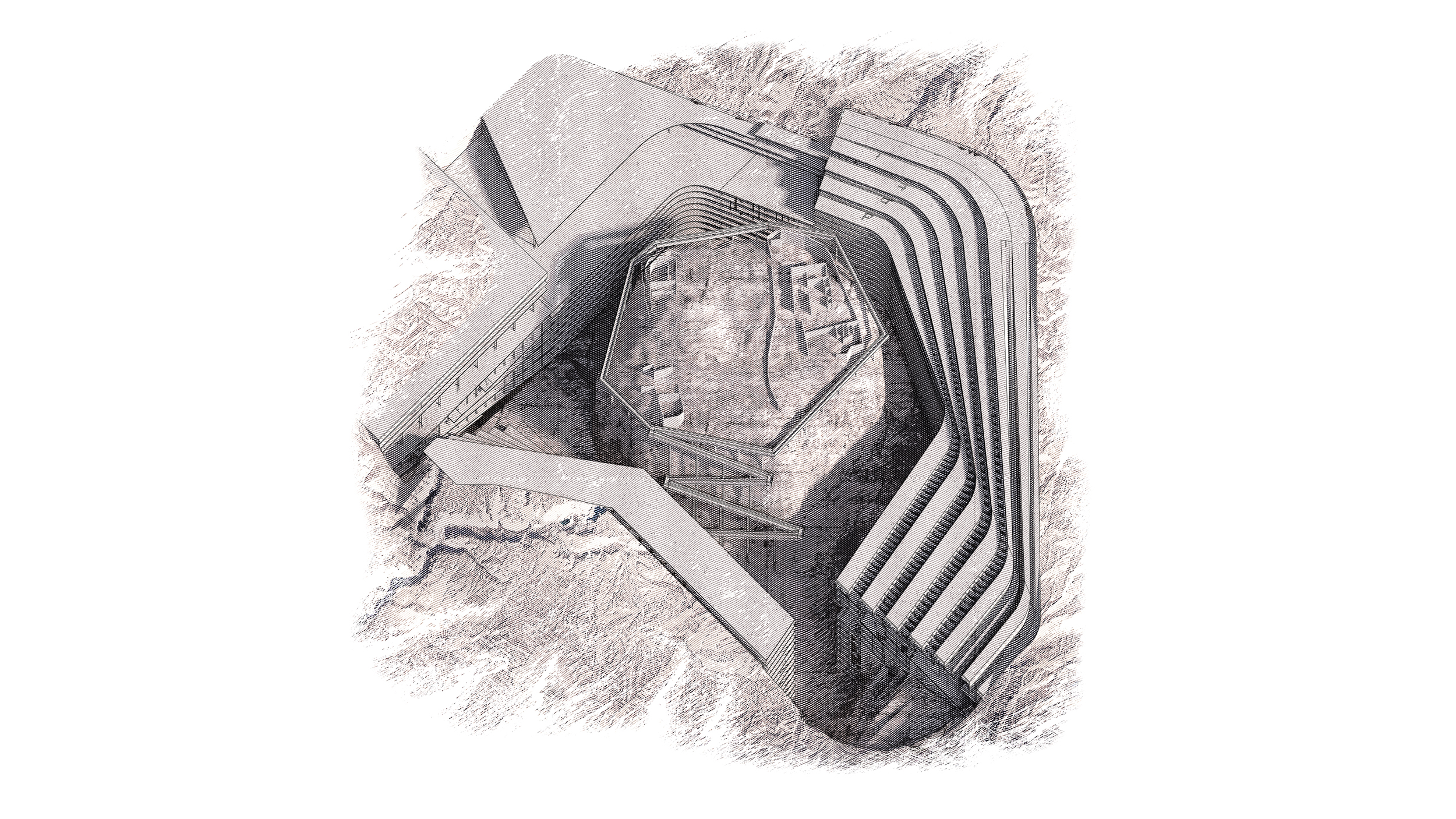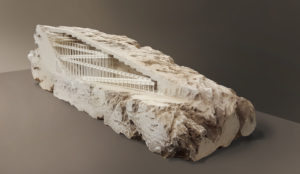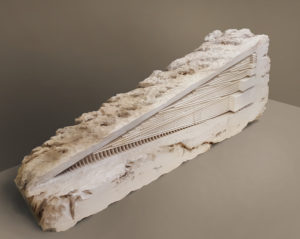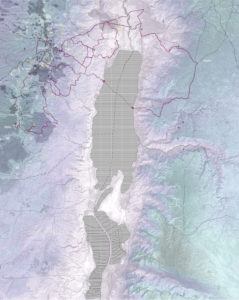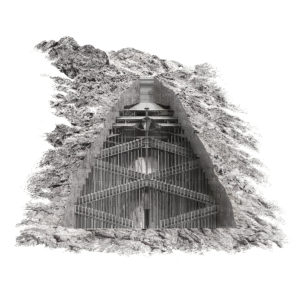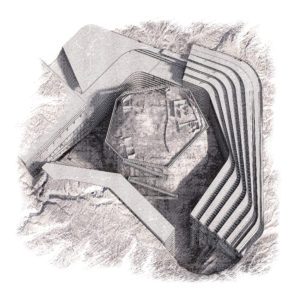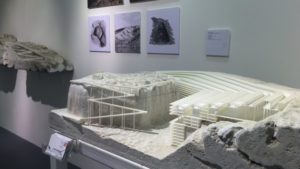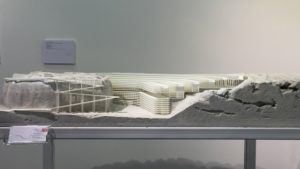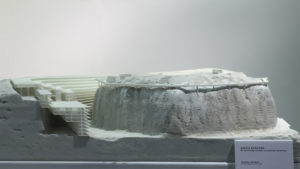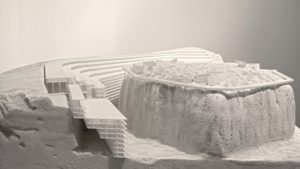FAITH ESTATES
Faith Estates
Re-inventing tourism in contested territories…
‘Faith Estates‘ is a design exploration of the symbiotic relationship between the three monotheistic religions and real estate by proposing a new infrastructure for religious pilgrimage around sites on the border of the Dead Sea. The design vision forms a territorial occupying mechanism of using religious claims in order to construct tourism which is based on archaeological and materialistic evidences, optical connections, and processions responding to different land ownership patterns and political disputes in the region around the Dead Sea.
The design strategy follows the concept of redeeming the land and a ‘return to the soil’ as a tactic to claim, reveal and protect the lands that are being proposed using the methods of digging, carving and cutting the topography in order to introduce the touristic developments as a new pedagogical experience.
Each site is subject to excavation, a process that literally liberates and animates the remains of the “Holy Land” within a political context. In this project, each point along the proposed pilgrimage route plays host to two communities: a religious community related to the history of the site that is responsible for its maintenance and an itinerant community of tourists and pilgrims who are able to stay in the site for short periods of time.
Our intention was that the circulation of tourists is brought into contact with the rituals of the community that hosts them. Furthermore, each site is organized around a specific view of the territory so that the pedagogical aspect of the shared rituals and the symbolic aspect of the view become mutually productive within the attempt to re-territorialize both the landscape and the figure of the tourist.
The excavation and mobilization of religious remains forms a powerful weapon in territorial disputes. The project envisions a new form of mass religious tourism around the Dead Sea in the context of its existing territorial and ideological conflicts. The notion of “Holy Land” is taken literally –everything might be a sacred ground, a relic in waiting, needing only to be excavated, exhibited, and circulated to animate desires and their attendant political claims. In what we term as faith estate, the sacred and the profane are symbiotic; it describes the way that real estate markets animate religious sentiment and particularly the way that tourists and the pilgrims can be unwittingly appropriated within a larger political territorial project.
The vision proposes a new set of pilgrimage routes starting at Machaerus in Jordan where they begin to follow the steep valleys down towards the shore of the Dead Sea. From here they connect to the opposite shore of the Dead Sea on the West Bank in Occupied Palestine. Each site along the new pilgrimage route strategically recombines a political pedagogical project organized around the excavation of holy sites with mass tourist resorts based on leisure activities.
Each station on the route is marked by V-shape excavation forming a void oriented toward a view of Machaerus or Jerusalem. The excavation is understood as a fundamental in the liberation of the “Holy Land” and its animation within Christian ritual. Each station in the pilgrimage route establishes a relation between the religious communities meant to oversee the ‘sacred’ character of the site, its authenticity and simultaneously host temporary visitors in the form of mass tourism.
A thesis project called ‘Faith Estates: Re-inventing tourism around the Dead Sea’, 2015 Gold Prize winner of UCL Bartlett School of Architecture’s post-professional Masters programme, B-Pro, in MArch Urban Design. All images courtesy of Akarachai Padlom, Eleftherios Sergios and Nasser Alemadi.
